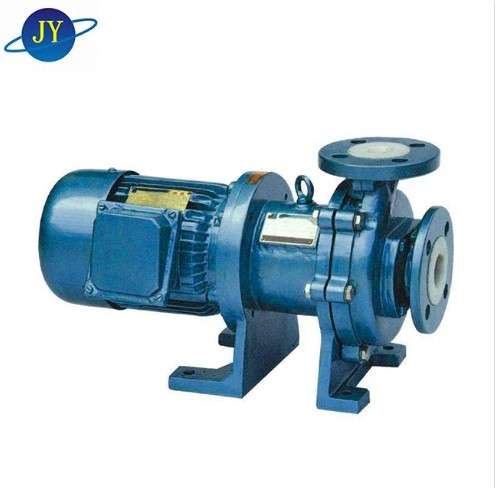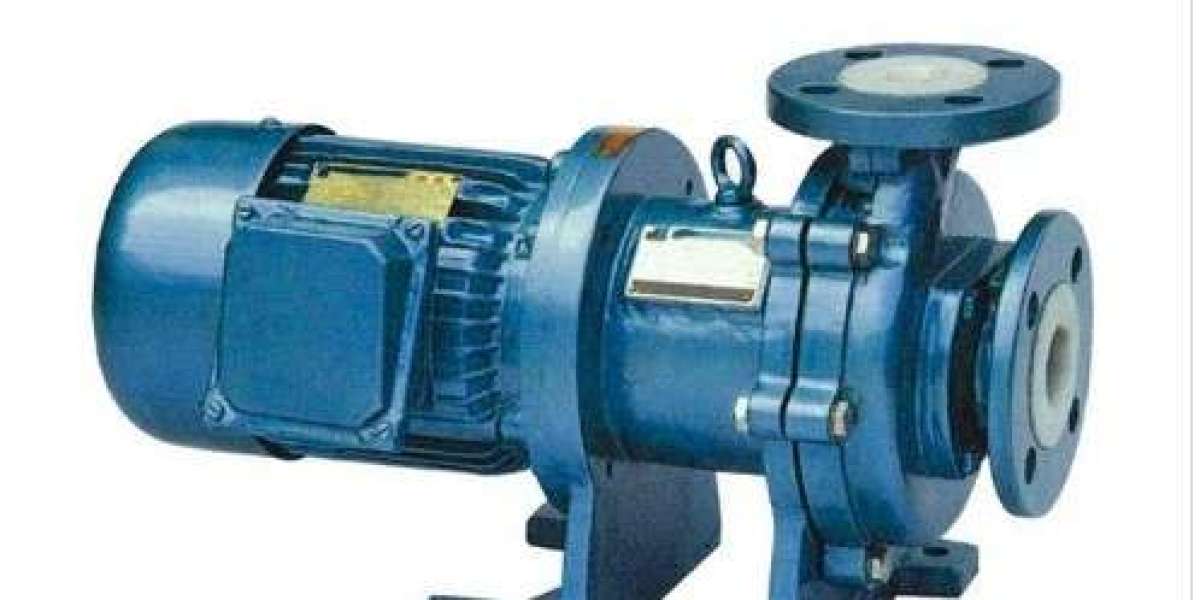
In today’s fast-paced industrial landscape, the demand for safer, more reliable, and maintenance-free fluid transfer systems has never been greater. Among the innovations transforming this space, the Magnetic Pump stands out as a game-changer. With its seal-less design and ability to handle corrosive, toxic, or flammable fluids with minimal risk of leakage, the magnetic pump is increasingly becoming the pump of choice in chemical processing, pharmaceuticals, electronics manufacturing, and more.
This article explores what magnetic pumps are, how they function, where they are used, and why they are revolutionizing the way we handle sensitive or dangerous liquids.
What is a Magnetic Pump?
A magnetic pump, also known as a magnetically driven pump or mag-drive pump, is a type of pump that uses magnetic coupling to transmit torque from the motor to the impeller without direct mechanical contact. This unique design eliminates the need for traditional shaft seals—a common point of failure in conventional pumps—making magnetic pumps virtually leak-proof and ideal for handling hazardous or volatile fluids.
The magnetically driven mechanism ensures that the internal liquid path remains completely enclosed, minimizing the possibility of leaks, contamination, or mechanical wear due to friction between moving parts.
How Does a Magnetic Pump Work?
The core principle of a magnetic pump lies in magnetic coupling. Here's a simplified breakdown of the working mechanism:
- Two Magnet Sets: The magnetic pump contains two sets of magnets—an outer drive magnet connected to the motor, and an inner driven magnet attached to the pump impeller.
- Separation by Containment Shell: These magnets are separated by a containment shell, which acts as a barrier between the motor (dry side) and the pumped liquid (wet side). The containment shell is typically made of non-magnetic, corrosion-resistant materials.
- Magnetic Torque Transmission: When the motor rotates the outer magnet, the magnetic field causes the inner magnet (and therefore the impeller) to rotate as well, moving the fluid through the pump.
- No Shaft Penetration: Since there is no physical shaft passing through the pump casing, the risk of leakage is eliminated.
This seal-less, leak-free design provides a significant advantage in applications involving corrosive, flammable, or toxic chemicals.
Key Components of a Magnetic Pump
- Outer Drive Magnet: Connected to the motor shaft and responsible for initiating rotation.
- Inner Driven Magnet: Connected to the impeller and placed inside the containment shell.
- Containment Shell (Canister): Serves as a barrier between the magnets, isolating the fluid.
- Impeller: Rotates to transfer the fluid.
- Pump Casing: Encloses the impeller and fluid, designed to resist corrosion and pressure.
Advantages of Magnetic Pumps
Magnetic pumps offer several distinct advantages over traditional mechanical seal pumps:
1. Leak-Free Operation
The absence of shaft seals eliminates the primary point of leakage, ensuring a tight, closed system. This is crucial for handling aggressive or environmentally hazardous fluids.
2. Reduced Maintenance
With no mechanical seals to wear out, maintenance intervals are extended, reducing downtime and maintenance costs.
3. Enhanced Safety
Ideal for flammable or toxic fluids, magnetic pumps reduce the risk of chemical exposure, fire, or explosion due to seal failure.
4. Longer Service Life
The non-contact magnetic coupling minimizes internal wear, leading to greater reliability and longevity.
5. Energy Efficiency
With fewer friction points and efficient design, magnetic pumps often consume less energy compared to their mechanically sealed counterparts.
Common Applications of Magnetic Pumps
Magnetic pumps are used in a wide array of industries and processes:
● Chemical Processing
Magnetic pumps are ideal for transferring corrosive acids, alkalis, solvents, and other aggressive chemicals. Their leak-proof design ensures safe chemical handling and minimizes environmental impact.
● Pharmaceutical Industry
Used in sterile or cleanroom environments, magnetic pumps help maintain purity during the transfer of sensitive liquids and ingredients.
● Electronics Manufacturing
In semiconductor and electronics industries, ultra-pure fluids such as deionized water and etching solutions must be handled with extreme care, making magnetic pumps a perfect fit.
● Oil and Gas
Magnetic pumps handle dangerous hydrocarbons and volatile chemicals, reducing the risk of leaks in high-risk environments like offshore platforms.
● Food and Beverage
In applications where hygienic, non-contaminating fluid transfer is critical, magnetic pumps provide a reliable and sanitary solution.
Material Selection and Compatibility
Choosing the right materials for magnetic pump components is critical based on the chemical properties of the liquid:
- Pump Housing: Often made of stainless steel, polypropylene, or PVDF (polyvinylidene fluoride) depending on corrosion resistance needs.
- Containment Shell: Materials such as ceramic, carbon fiber reinforced plastic, or metal with fluoropolymer coatings are commonly used.
- Magnets: Rare earth magnets like neodymium and samarium cobalt are favored for their strength and temperature resistance.
Material compatibility must always be verified to avoid degradation or failure during operation.
Limitations and Considerations
Despite their advantages, magnetic pumps are not without limitations:
- Slurry Handling: Magnetic pumps are not ideal for liquids with high solid content, as particles can interfere with internal components.
- Dry Running Risk: Most magnetic pumps are not designed to run dry. Running them without fluid can damage the containment shell and bearings.
- Torque Slippage: Overloading can cause the magnetic coupling to slip, leading to a drop in performance or system shutdown.
Proper system design, flow rate planning, and overload protection are essential to avoid these issues.
Emerging Trends and Innovations
With advancements in technology, magnetic pumps are becoming even more sophisticated:
- Sensor Integration: Newer magnetic pumps feature embedded sensors for monitoring pressure, temperature, and flow in real time, enabling predictive maintenance.
- Advanced Coatings: Improved coatings for containment shells and internals increase durability against aggressive chemicals and high temperatures.
- Digital Control Systems: Integration with programmable logic controllers (PLCs) and SCADA systems allows remote monitoring and precise control of pump operations.
Conclusion
Magnetic pumps represent a leap forward in industrial fluid handling, offering a seal-less, leak-proof, and maintenance-friendly alternative to traditional pumps. Their ability to safely handle hazardous, corrosive, and high-purity fluids makes them indispensable in many high-stakes industries. As innovations continue to refine their design and expand their capabilities, magnetic pumps will undoubtedly Click here to view more details https://www.xjy-pump.com/



